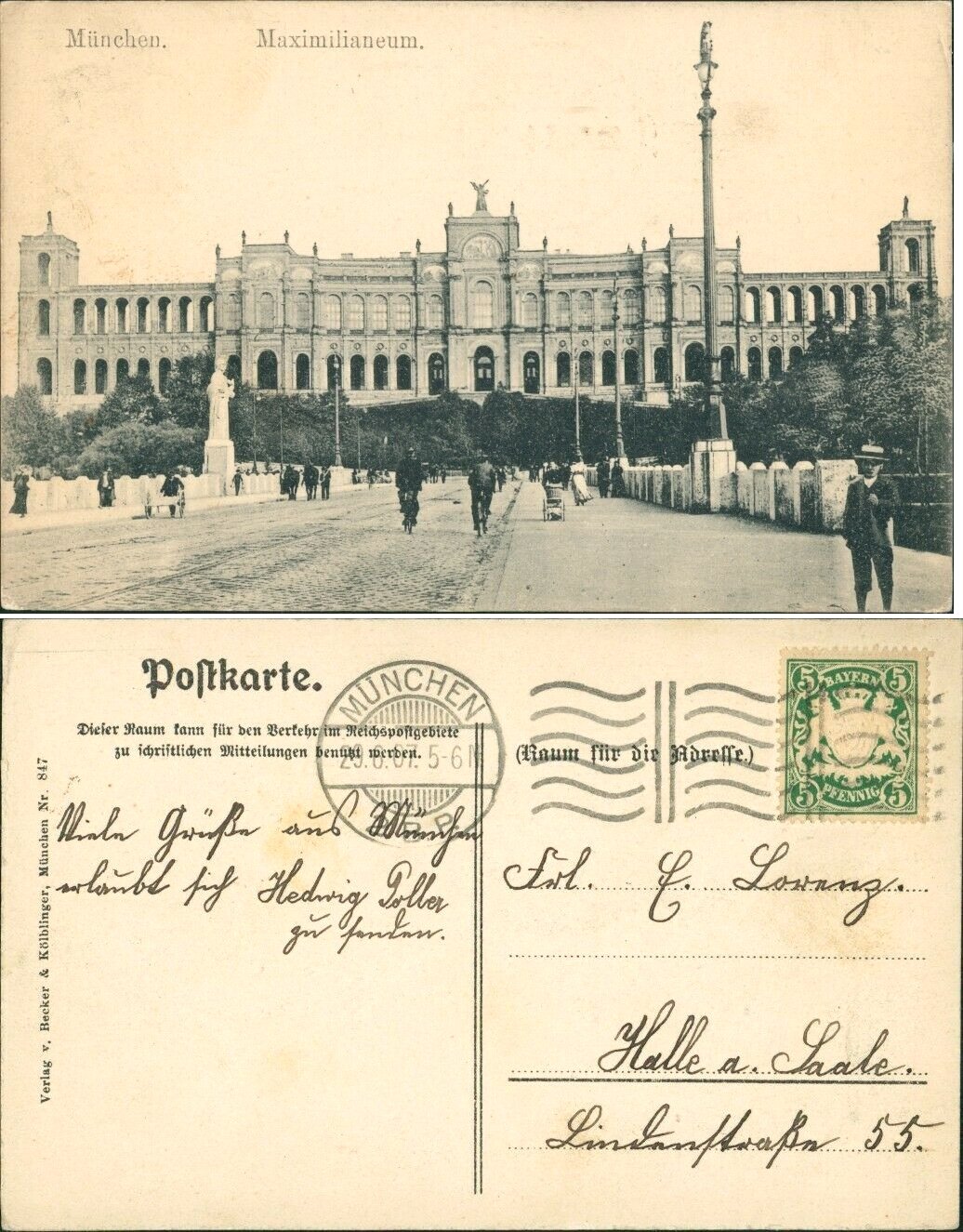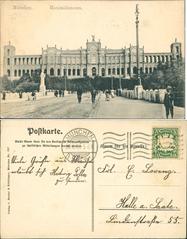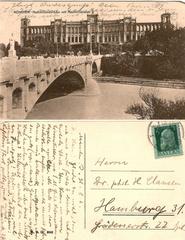
Maximilianeum Munich: Visiting Hours, Tickets, and Historical Sites Guide
Date: 14/06/2025
Introduction
The Maximilianeum is one of Munich’s most iconic landmarks, embodying Bavarian history, culture, and governance. Overlooking the Isar River at the eastern end of Maximilianstraße, this neo-Renaissance masterpiece was envisioned by King Maximilian II in the 19th century to support gifted students and serve as a symbol of academic and artistic excellence. Today, it functions as the seat of the Bavarian State Parliament while continuing its educational legacy. This guide offers detailed insight into the Maximilianeum’s history, architecture, visiting hours, ticketing, accessibility, and nearby attractions, equipping you with everything needed to plan a memorable visit. For official details, consult the Bavarian Parliament’s website and resources like Munich Tourism.
Table of Contents
- Introduction
- Historical Overview & Architectural Vision
- Construction and Early Use
- Transition to the Bavarian Parliament
- Architectural and Artistic Highlights
- Impact of World Wars and Restoration
- The Maximilianeum Foundation & Legacy
- Symbolism and Cultural Significance
- Visiting Information (Hours, Tickets, Tours)
- Accessibility & Photography
- Getting There & Nearby Attractions
- Visitor Tips & Security
- FAQ
- Conclusion
- Sources & Further Reading
Historical Overview & Architectural Vision
Commissioned in 1857 by King Maximilian II, the Maximilianeum was conceived as a residence and foundation for talented Bavarian students. Architect Friedrich Bürklein designed the building in a Renaissance revival style, later modified by Gottfried Semper to incorporate neo-Renaissance elements. The building’s location—perched atop a hill on the Isar’s eastern bank—was chosen for its prominence and symbolic connection to Munich’s cultural aspirations (Wikipedia; Life Globe).
The structure’s red brick façade, grand arches, and ornate statuary combine to create a striking visual statement, blending Gothic and Renaissance motifs. This stylistic evolution reflects 19th-century historicism, as Bavarian rulers sought to link their reign with both tradition and modernity (Absolute Munich; Muenchen.de).
Construction and Early Use
Construction of the Maximilianeum started in 1857 and was completed in 1874. Initially, the building served as the home of the Maximilianeum Foundation, providing scholarships and accommodation to exceptional students—known as “Maximilianeans”—from Bavaria and the Palatinate. The building was also used for cultural events and exhibitions, further cementing its role as a center for academic and artistic life (Fattire Tours).
Transition to the Bavarian Parliament
In 1949, the Maximilianeum became the seat of the Bavarian State Parliament (Bayerischer Landtag), a function it retains today. Renovations introduced modern offices and the plenary chamber without sacrificing the building’s historic character. The Maximilianeum thus evolved from a royal foundation into the heart of Bavaria’s democratic governance (Bayern Landtag).
Architectural and Artistic Highlights
Exterior Features
The Maximilianeum’s façade is adorned with arcades, pilasters, statues representing values such as wisdom and justice, and a central portico crowned by the “Genius of Bavaria.” Its elevated position offers panoramic city and river views. The building is framed by the Maximiliansanlagen park, which provides a tranquil green setting (Life Globe; Bored in Munich).
Interior Features
While access is limited, the interiors are renowned for:
- Frescoes and Murals: Celebrating Bavarian history and intellectual life.
- Sculptures and Busts: Honoring notable figures.
- Stained Glass and Mosaics: Adding vibrancy to ceremonial spaces.
- Plenary Chamber: The center of parliamentary activity, designed for openness and gravitas.
Impact of World Wars and Restoration
The Maximilianeum suffered extensive damage during World War II, with two-thirds destroyed in air raids. Postwar restoration under Karl Kergl and later renovations in the 1950s and 2000s preserved its Renaissance-inspired features while integrating modern amenities. Today, careful preservation ensures both its historic character and contemporary function (Wikipedia; Muenchen.de).
The Maximilianeum Foundation & Legacy
The Maximilianeum Foundation continues to support outstanding students, who reside in the building and contribute to Bavaria’s academic, political, and cultural life. The Foundation’s mission of fostering excellence remains central to the building’s identity (Bayern Landtag).
Symbolism and Cultural Significance
The Maximilianeum is both a symbol of Bavarian statehood and a living institution. Its design embodies ideals of truth, beauty, and civic virtue. The building remains a focal point for public events, media, and cultural life in Munich (Bored in Munich).
Visiting Information
Maximilianeum Visiting Hours
- Exterior and Gardens: Accessible year-round, free of charge.
- Interior Access: Generally closed except for special exhibitions and the annual “Open Parliament Day.” Plenary sessions may be open to the public with advance registration.
Tickets
- Exterior: No ticket required.
- Interior (Special Events/Sessions): Free, but advance registration is often necessary. Check the official website for current details.
Guided Tours
- Regular Tours: Not generally available to the public.
- Special Tours: Sometimes offered for educational groups or during open events. Booking in advance is essential.
Accessibility
- The gardens and exterior paths are wheelchair accessible. Interior accessibility may vary; contact staff in advance for special arrangements.
Photography
- Exterior: Photography is encouraged.
- Interior: Restrictions apply, especially during parliamentary sessions or events.
Getting There & Nearby Attractions
Location: Max-Planck-Strasse 1, Bogenhausen, 81675 Munich.
- Public Transport: U4/U5 underground lines connect from the city center; several tram and bus stops are nearby. The Isartor S-Bahn station is a 5-minute walk away (munich-info.info).
- Parking: Limited; public transport is recommended.
Nearby Attractions:
- Maximilianstraße: Luxury shopping and historic architecture.
- Deutsches Museum: Science and technology exhibits.
- Munich Residenz: Royal palace and museums.
- English Garden: Expansive city park.
Visitor Tips & Security
- Best Time to Visit: Spring and early autumn are ideal for outdoor exploration.
- Security: Expect airport-style checks when attending sessions or exhibitions. Bring a valid photo ID.
- Dining: No on-site dining, but nearby districts offer a range of options (timeout.com).
- Families/Groups: Gardens are family-friendly; special group visits can be arranged in advance.
Frequently Asked Questions (FAQ)
Q: What are the Maximilianeum’s opening hours?
A: The exterior and gardens are accessible year-round. Interior access is limited to special events; hours vary—check official sources.
Q: Is there an entrance fee?
A: No general admission fee; special events are usually free but may require registration.
Q: Are guided tours available?
A: Not regularly. Educational or special group tours may be arranged with advance notice.
Q: Is the Maximilianeum accessible for people with disabilities?
A: Yes, for most exterior areas. Interior accommodations depend on the event.
Q: Can I take photos inside?
A: Generally not, especially during parliamentary sessions. Exterior photography is permitted.
Conclusion
The Maximilianeum stands as a testament to Munich’s historical and architectural legacy, balancing royal tradition with democratic progress. While its interior is mostly reserved for official functions, the impressive exterior, gardens, and occasional public events offer visitors a rewarding glimpse into Bavaria’s past and present. Plan ahead by checking for special exhibitions or open house days, and combine your visit with the nearby sights along Maximilianstraße or the Isar river.
For the most current information on visiting hours, tickets, and events, consult the official Bavarian Parliament website and local travel guides. Enhance your exploration with the Audiala app for up-to-date tips and self-guided audio tours.
Sources & Further Reading
- Official Bavarian Parliament Site
- Maximilianeum Munich: Architectural Marvel, Historical Landmark & Visitor’s Guide
- Munich Tourism - Maximilianeum
- Visiting the Maximilianeum in Munich: Hours, Tickets, and Complete Visitor Guide
- Munich Travel Tips – Maximilianeum
- Deutsches Museum
- Bored in Munich – Maximilianeum Guide






































































































